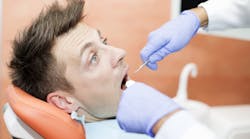9 strategies for working smarter, not harder in your dental practice
In the fast-paced world of dentistry where every minute counts, the mantra "work smarter, not harder" resonates deeply. But what does this truly mean for dental practitioners? I’ll delve into real-world insights from dental professionals, exploring various strategies to enhance efficiency, reduce burnout, and ultimately increase practice profitability.
Reassess hygiene management
For those managing multiple hygienists, it might be time to evaluate whether assisted hygiene or reducing hygiene appointments is a better financial fit. Hygiene overhead often comprises a significant percentage of total expenses. Streamlining this aspect of the practice can free up resources and improve profitability.
For instance, adopting an assisted hygiene model with 30-minute appointments allows for two patients per hour, optimizing both time and income. This approach not only reduces costs but also increases the practice's capacity to serve more patients, potentially increasing revenue.
Streamline appointments
One approach to working smarter involves rethinking how appointments are scheduled. A common practice is to avoid splitting multiple fillings or procedures into several visits unless the patient requests this.
"I used to offer to split fillings into smaller appointments, but now I try to do more in one visit," explained one dentist. This method not only maximizes chair time but also patient satisfaction by reducing the number of visits, which is particularly appreciated with today's busy lifestyles.
Optimize financial strategies
Financial acumen plays a significant role in working smarter.
Selective insurance participation: You can work smarter by charging fees supported by the area and not by taking every insurance plan. This allows for higher fees and less dependency on insurance reimbursements, which promotes a more financially stable practice.
Fee schedule negotiation: Directly negotiate with insurance companies or leverage third-party administrators (TPAs) for better fee schedules.
Out-of-network benefits: Some dentists find that going out of network allows them to charge higher fees, which can be more lucrative than in-network contracts.
TPAs such as Careington or Stratose/Maverest: These can offer better reimbursement rates than direct insurance negotiations, which enhances practice revenue.
Embrace same-day dentistry
While not universally applicable due to varying practice models and patient bases, same-day dentistry for quick procedures such as fillings or crown impressions can be a game-changer. It not only improves patient convenience but also increases the practice's operational efficiency.
Cut down on overhead
Cost management is another pillar of working smarter.
Expense audit: Regularly review expenses, such as malpractice coverage or subscription services, to ensure you're not overpaying. "I saved money by shopping around for malpractice insurance," one dentist shared.
Technology for efficiency: Switch to software that provides multiple functionalities, like appointment scheduling and confirmation, to reduce the need for multiple subscriptions.
Manage staff for reduced overhead
The human element in dentistry cannot be understated.
Staff time management: Implementing strict time quotas for procedures like hygiene sessions can help effectively manage costs. "Cutting time for SRPs to 30 and 40 minutes has streamlined our operations," said one practice owner.
Zero-minute clock policy: One innovative method involves a "zero-minute clock-in/zero- minute clock-out" policy to cut down on nonproductive hours, which significantly reduces labor costs.
No review obsession: One dentist said, "I have resolved not to give a hoot about reviews. I will keep doing my best and caring, but I have put the keys to our Google page in my assistant's hands." By delegating this task, practitioners can focus on quality care rather than getting bogged down by online feedback.
"I didn't click on it to investigate. It is what it is, and it won't change anything," said another dentist about a bad Yelp rating he encountered unexpectedly. Recognize that 20% of patients will always be dissatisfied, regardless of service quality.
Examine DIY vs. delegation
Opinions diverge on this topic.
DIY for savings: Especially in the startup phase, handling maintenance or administrative tasks yourself can keep costs low. However, this can lead to burnout if you do not balance it properly.
Delegation for growth: The opposing view is to grow your practice by hiring more staff or associates. This allows you to step away from the chair and focus on leadership and business strategy. One dentist described this as "obtaining income from many people working with you, not just yourself."
Embrace technology advancement
3D printing: For those adopting it, 3D printing represents working smarter by offering rapid prototyping for temporaries or surgical guides. "I can print a new temp if it breaks, saving time for both the patient and me," a tech-savvy dentist noted. However, the investment and expertise required mean it's not for everyone.
Reflect on "working smarter"
"Everyone has their own definition of working smarter, not harder," one practitioner remarked. For some, it's about efficiency and financial optimization; for others, it's also about personal satisfaction and mastering various aspects of their practice. The key takeaway is adaptability: understand your practice's unique needs and your personal goals to tailor strategies that work for you.
Working smarter in dentistry isn't about a universal checklist but rather a personalized approach to managing time, resources, human capital, and emotional well-being. By thoughtfully adopting these strategies, dental professionals can achieve a balance where they work less hard but achieve more, both in professional success and personal fulfillment.









